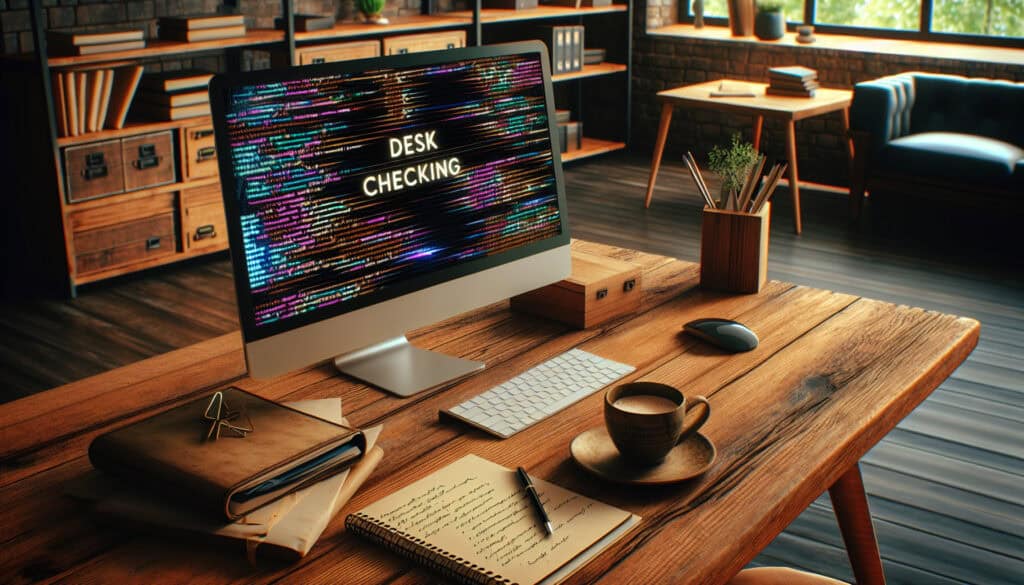在编译或执行之前,对自己的源代码或逻辑进行审查的非正式人工过程。
- 方法: 工程, 人体工程学
桌面检查

桌面检查
- 敏捷方法论, 持续改进, 错误预防, 质量保证, 质量控制, 软件工程, 软件测试, 验证, 验证
目标
如何使用
- 开发人员坐在自己的办公桌前,逐行检查代码的逻辑,找出错误。这是最基本的代码审查形式。
优点
- 简单、快捷,无需特殊工具;可帮助开发人员在简单错误影响到其他人之前将其捕获。
缺点
- 由于熟悉代码,开发人员很容易忽略自己的错误;但这并不能取代正式的同行评审或系统测试。
类别
- 工程, 质量
最适合:
- 开发人员对自己的代码进行手动、心智演算,以捕捉明显的错误。
在软件开发过程中,尤其是在项目的设计和测试阶段,经常会使用桌面检查(Desk Checking)技术,开发人员会在部署产品之前仔细检查自己的代码,以找出逻辑缺陷或排版错误。这种技术不仅适用于个人开发人员,也可以在团队成员参与同行评审的协作环境中有效实施。在金融、航空航天和医疗保健等精度要求极高的行业中,桌面检查作为防止代价高昂的错误或系统故障的先发制人的措施,变得更加重要。参与者通常包括软件工程师、质量保证测试人员和技术负责人,他们可以在代码验证过程中提出不同的观点。这种方法的应用不需要复杂的工具或平台,因此无论是成熟的公司还是初创企业都可以采用,尤其是在敏捷开发环境中。Desk Checking 还能促进问责文化,鼓励开发人员通过在头脑中演练代码的执行来掌握代码的所有权,从而开发出更强大、更可靠的软件解决方案。在开发周期的早期鼓励这种做法可以节省时间和资源,从而提高项目效率并确保最终产品的整体质量。
该方法的关键步骤
- 仔细阅读每一行代码,将其执行情况可视化。
- 在代码运行过程中识别并在头脑中跟踪变量值。
- 检查条件语句和循环是否有逻辑错误。
- 验证函数调用及其参数是否正确。
- 注意迭代或索引处理中的偏差。
- 考虑边缘情况以及代码如何处理这些情况。
- 检查是否有未使用的变量或冗余代码。
- 评估代码的流程和结构的可读性。
- 反思命名惯例和格式的一致性。
- 在头脑中回放情景,确保出现预期结果。
专业提示
- 在思维演练过程中,重点关注边界条件和边缘情况,以确保对意外输入的稳健性。
- 在桌面检查中加入同行反馈,向同事口头表达你的逻辑,这样可以发现隐藏的假设。
- 记录您的桌面检查思维过程,供今后参考;这对于识别重复出现的错误模式非常有价值。
历史背景
1828
1850
1854
1854
1911
1928
1950
1827
1848
1850
1854
1895
1914
1943
1970
(如果日期不详或不相关,例如 "流体力学",则对其显著出现的时间作了四舍五入的估计)。















相关文章
METS 卡路里计算器
元分析
信息映射
心理模型图
可接受的最大推力和拉力
物料需求计划(MRP)